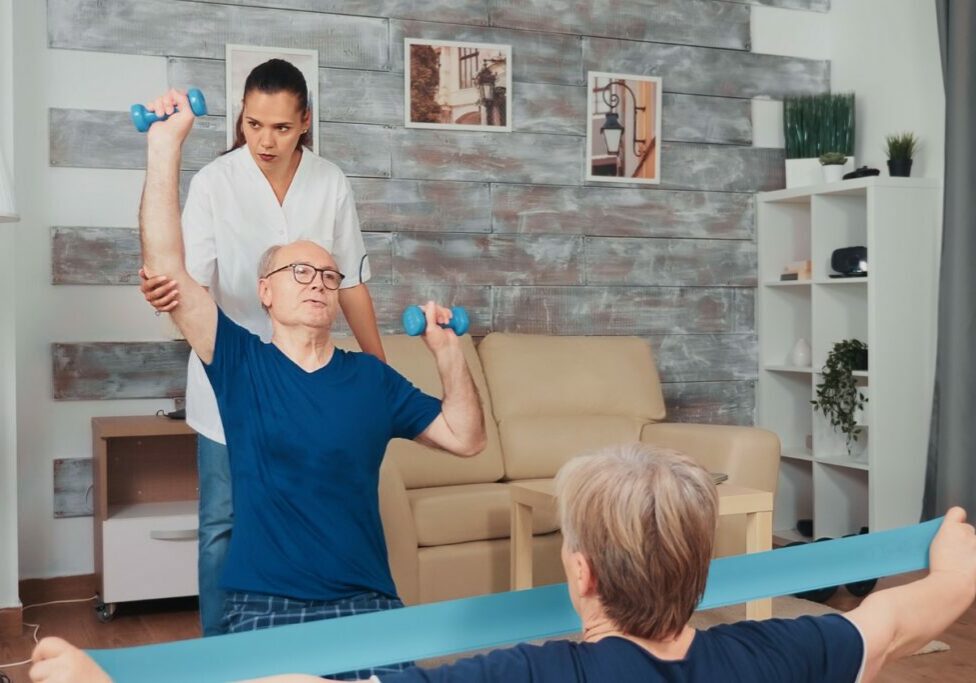Sacroiliac Joint Dysfunction

The sacroiliac joint is a joint between the sacrum and the ilium, or pelvic bone. The 2 sides of the sacroiliac joint normally work together. If 1 side becomes stiff, they will not move together and this causes pain or muscle stiffness in the area. Pain is often made worse with walking and bending activities. It is also possible that 1 side may become too loose (lax) as well, resulting in SIJ dysfunction. This may occur during the menstrual cycle or pregnancy due to hormonal changes that cause the ligaments to become more lax.
SIJ dysfunction can occur with injury, such as when a person falls and lands on 1 side of the body and alters the position of the joint, or when an athlete overtrains. Muscle imbalances and hip problems, such as hypermobility or dysplasia, may also lead to SIJ dysfunction. Sacroiliac pain is also related to some types of arthritis, such as ankylosing spondylitis, an inflammatory process most often affecting the lower back, which may cause the vertebrae to fuse.
People with SIJ dysfunction may experience:
- Pain that may be sharp, stabbing or dull, localised to 1 side of the pelvis/low back, groin, or tailbone.
- Pain that may radiate down to the knee.
- Pain with movements, such as standing up from a sitting position, turning in bed, or bending/twisting.
- Muscle tightness and tenderness in the hip/buttock region.
- Pain with walking, standing and prolonged sitting.
- Pain that is worse when standing and walking, and eases when sitting or lying down.
Sacro-iliac pain is often under-diagnosed, under-appreciated, and misunderstood. The clinical presentation together with a thorough examination from your Osteopath is usually sufficient to diagnose sacroiliac joint dysfunction.
Blackburn Osteopathy treatments aim to assist in the body’s natural healing process, speeding up the recovery and reducing the likelihood of future recurrence.
Manual therapy Often, manual therapy includes soft tissue release or massage for tight and sore muscle groups. Manual therapy and muscle energy techniques are used to correct pelvic/SIJ alignment.
Flexibility exercises Stretching exercises may be prescribed to improve the flexibility of tight muscles. They may also help to improve movement in the spine and lower extremities and help decrease stress at the sacroiliac joint during daily activities.
Strengthening exercises Strengthening helps to improve the stability of the sacroiliac and spinal joints, which helps to reduce ligament sprain and pain. These exercises are focused on weak muscles, including the lower abdominal, pelvic floor, and buttocks muscles.
Education How you move and use your body for daily work and other activities can contribute to your SIJ dysfunction and pain. Your Osteopath will teach you how to improve your movements or body mechanics based on your specific daily activities. The Osteopath may also make recommendations to improve activities, such as sitting, or lifting and carrying objects.
Modalities Hot and cold treatments are often prescribed to loosen up tight muscles prior to treatment, or to alleviate pain following exercise. Electrical stimulation uses electricity to target nerve fibres that send pain signals to the brain and may also be used in conjunction with ice to provide pain relief.
Bracing Your Osteopath may also recommend wearing a sacroiliac belt, designed to provide support to the sacroiliac joints. It is used to provide stability during daily activities as your strength returns, and flexibility improves. This modality is especially helpful for pregnant women.
The recovery time for sacroiliac joint dysfunction may vary from patient to patient depending on compliance with Osteopathic treatment. With ideal treatment, patients may be pain free in as little as several days, although typically this may take 2 – 3 weeks. It is important to note, however, that injured tissue takes approximately six weeks to restore the majority of its strength in ideal healing conditions. Care must therefore be taken when returning to activity during this period.
Towards Wellness
Creativity
Creativity is important for a number of reasons, it’s fun and enjoyable, it boosts self-confidence and doing things that you like reduces stress and improves overall well-being, most importantly it stimulates the brain.
Creativity sharpens the brain, which can stem the advance of dementia in old age. The more new things you learn, the more use the brain gets, the sharper it will remain. It’s often recommended that seniors learn new skills and challenge themselves with new opportunities, but this recommendation is appropriate for any age.
Stretch of the Month
Chiropractic – Osteopathy – Physiotherapy
The Bridge Stretch

This exercise helps to build strength in your glutes and lower back, helping to support the SI joint. To perform this exercise;
- Lie on your back with your knees bent and the arms against the body and palms against the floor.
- Squeeze the buttocks and raise the hips off the ground to bring the torso into a straight diagonal line.
- Hold this position for 5 seconds then slowly lower yourself back to the ground.
- Repeat 8-10 times.



